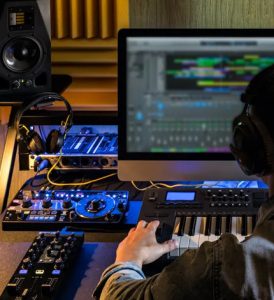Using reference tracks

It is an industry secret that there are in fact no industry secrets. Or are there… There might be one industry secret every mixing engineer or music producer has up his sleeve. And that is using a reference track.
If you spend so much time in your own world listening to a pair of monitors it is easy to loose perspective. A good way to refresh your ears and to make well informed choices is to use a reference track.
What are reference tracks?
A reference track is a track you use to compare certain elements of your mix.
How do you use a reference track?
The most is important stap is to level match your own mix to your reference track as close as possible. If you use a mastered reference track, make sure you use a limiter on your stereo bus to make it just as loud. Louder always sounds better, so that is the first obstacle you will have to tackle.
Use the meters in your DAW to check if your track has more or less the same values as your reference.
What do you listen to?
You can use a reference track to compare basically anything. Lyrics, melody, guitar sound, you name it.
As a mixing engineer you pay attention to the following:
Frequency range
First you will probably compare the frequency range of your track with your reference. Look at both ends of the spectrum: the sub and the very top. Use your ears, but don’t be afraid to use a spectrum analyser or EQ to check if you notice anything.
Listen and look for certain frequencies that stick out. If so, go back to your mix and try to find those elements.
Dynamics
The dynamic range of your mix is highly dependent of your genre, so make sure you have an appropriate reference track. Don’t compare the dynamics of a hiphop track with an acoustic pop track.
Use metering plugins to check what your track is doing in comparison to your reference. If needed, go back to your mix.
And so on
If you keep on going, you will notice more and more things. For example, you can listen to the placement of certain elements in the stereo field. Or select a specific range of frequencies with an EQ and check which elements are most prominent. Play your track at different volume levels to listen to which elements stick out at which volume (both loud and soft).
How to pick the right reference track
You can use basically any track, as long as the instrumentation and genre are relevant to your mix. Yet it is also important to use a professional mixed and mastered track. This way you will base your decisions on a professional quality.
If you need to review a mix for a client, try to use your own mix as reference, to check if you make the proper decisions.
Reference tracks are used by the biggest pro’s in the game. Try to see it as an opportunity to learn from them! You will notice you can work faster, better and smarter.
